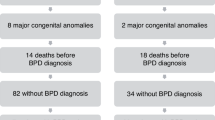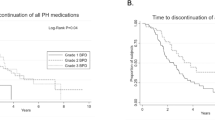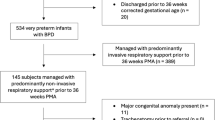Abstract
ABSTRACT: To determine significant thresholds obtained by bronchial challenge tests in children for assessment of bronchial reactivity, changes of respiratory resistance (Rint) induced by inhaled carbachol were evaluated in 20 asthmatic children (10 boys and 10 girls, mean age 9.1 ± 2.8 y, range 5 to 15 y) and 20 healthy control children (10 boys and 10 girls, mean age 12.1 ± 2.6 y, range 8 to 16 y). Baseline lung function was assessed by whole body plethysmography. The carbachol challenge test was performed by the interruption technique. The objectives were to search for the most predictable provocation dose (PD) according to statistical and practical considerations. The statistical argument is given by the condition that the target PD must definitively be out of the measurement error of baseline values. From the practical point of view, the object is to provoke the subjects the least amount possible. As thresholds of bronchial reactivity, the provocation doses inducing a 50%, 65%, 75%, or 100% increase in baseline Rint, (PD50, PD65, PD75, PD100) were computed by a 4th power polynomial function analysis including data points of the entire dose-response curve. In comparison, a new threshold, the “variance based” provocation dose (PDvb), was defined as threshold to be definitively above the range of the baseline Rint variation before initiating challenge [PDvb > mean + 2 SD range of Rint(0)]. Although the PD50, PD65, PD75, and PD100 can be adequately computed by the 4th power function from the whole dose-response curve, comparison between the different provocation thresholds revealed that PDvb gives the best values to differentiate between healthy and asthmatic children (p < 0.002). Best cumulative sensitivity and specificity were obtained for PDvb and even at a lower provocation level (95% true-negatives at 300 μg; 95% true-positives within the range up to 780 μg of carbachol), whereas these criteria for PD50 to PD100 are only reached at much higher doses. Therefore, PDvb features a mode to determine bronchial reactivity with improved sensitivity and specificity at lowest provocation dose levels. Other advantages are a shorter duration of testing, less occurrence of symptoms and a simpler mathematical approach.
Similar content being viewed by others
Log in or create a free account to read this content
Gain free access to this article, as well as selected content from this journal and more on nature.com
or
Author information
Authors and Affiliations
Rights and permissions
About this article
Cite this article
Sommer, C., Frey, U., Schönli, M. et al. Specific Approach on Dose-Response Curves to Inhaled Carbachol Assessed by the Interruption Technique in Children. Pediatr Res 34, 478–483 (1993). https://doi.org/10.1203/00006450-199310000-00018
Received:
Accepted:
Issue date:
DOI: https://doi.org/10.1203/00006450-199310000-00018
This article is cited by
-
Use of interrupter technique in assessment of bronchial responsiveness in normal subjects
BMC Pulmonary Medicine (2004)
-
Assessment of lung function in infants and young children with lung disease
European Journal of Pediatrics (1995)



